Pack Light, Pack Right: How to Pack a Backpack for Travel
Knowing how to pack a backpack for travel isn’t just a skill; it’s a travel game-changer. Efficient packing ensures comfort, convenience, and mobility, enhancing your journey in countless ways. Discover why it’s a must-know skill.
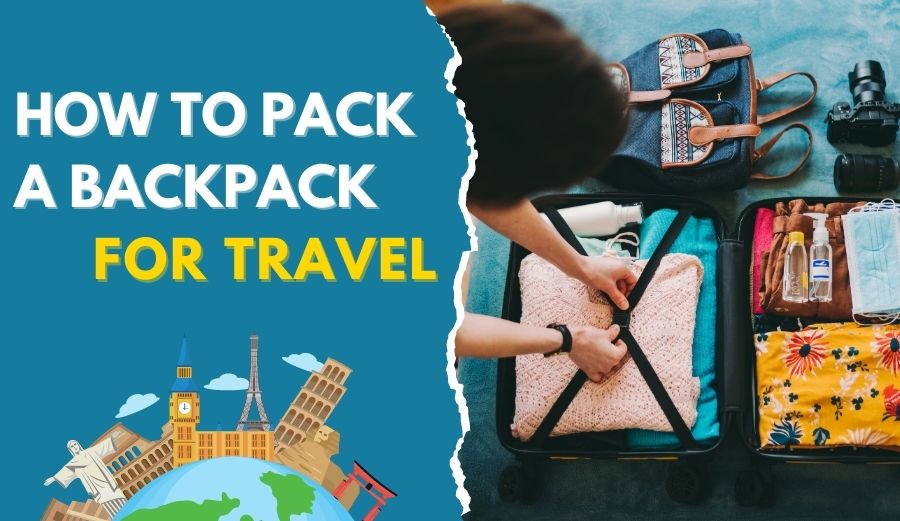
Are you tired of that nagging feeling of overpacking or struggling with an overstuffed backpack when you should enjoy your travels? Welcome to the ultimate guide on How to Pack a Backpack for Travel. We know that packing can make or break a trip, and we’re here to transform your travel experience.
From choosing the perfect backpack to mastering the art of efficient packing, this guide is your ticket to stress-free adventures. Get ready to explore the world with ease and confidence.
Say goodbye to packing woes because, by the end of this guide, you’ll be a backpack-packing pro!
Table of Contents
ToggleChoosing the Perfect Travel Backpack
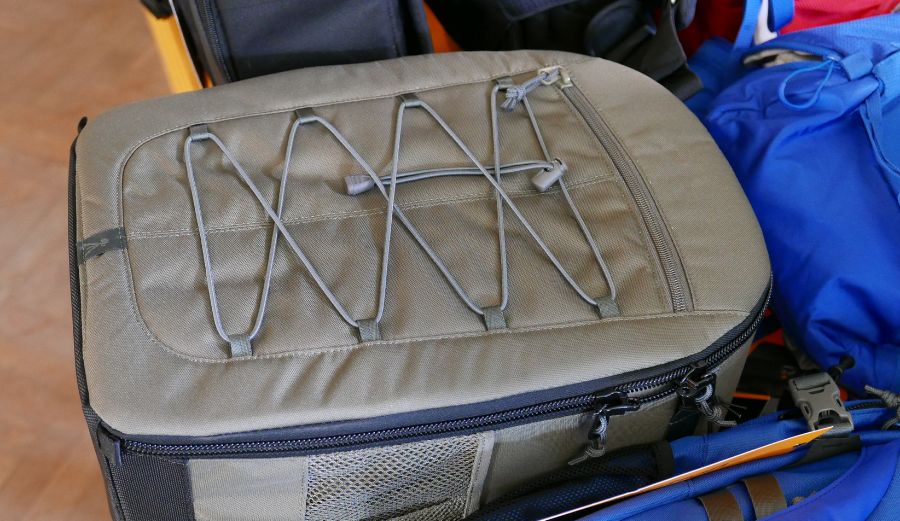
Selecting the right travel backpack is the crucial first step towards a seamless and enjoyable journey. It’s not just about a bag; it’s about your travel companion, your lifeline on the road. Let’s delve into why this decision is paramount.
Significance of Selection:
Your travel backpack is your home on the go. It’s where you’ll carry all your essentials, and its comfort and functionality can significantly impact your travel experience. A well-chosen backpack can make packing, moving, and accessing your belongings a breeze. At the same time, an ill-fitted or inadequate one can lead to discomfort, disorganization, and even unnecessary strain.
Travel Backpack vs. Hiking Backpack:
While both serve as packs, travel, and hiking backpacks are designed with distinct purposes. Trip or carry-on bags are tailored for urban explorers and globetrotters. They’re typically carry-on-sized, open from the front (like a suitcase), and feature multiple compartments for easy organization.
On the other hand, hiking backpacks prioritize durability, load distribution, and outdoor functionality. They often feature top-loading designs and fewer compartments.
The critical difference lies in accessibility and organization. Travel backpacks are like mobile wardrobes, allowing you to access your items quickly and neatly. Hiking backpacks excel in rugged terrains but may require more effort to access specific items.
Recommendations:
To help you make the right choice, here are a few recommendations for travel backpack brands and models:
- Osprey Farpoint/Fairview Series: Osprey’s Farpoint (men) and Fairview (women) series are renowned for their comfort, organization, and durability. They come in various sizes to suit your needs.
- Tortuga Setout: The Tortuga Setout offers a sleek design, ample compartments, and carry-on compatibility. It’s perfect for urban adventurers.
- AER Travel Pack: AER’s Pack combines minimalistic aesthetics with practical features, making it an excellent choice for city travelers.
- Kelty Redwing: If you prefer a hybrid design that can handle both urban and outdoor environments, the Kelty Redwing series might be your best bet.
Remember, the best travel backpack depends on your unique needs and preferences. Consider factors like size, durability, style, and specific features that align with your travel style. Your bag is more than just luggage; it’s your trusty travel companion, so choose wisely.
Packing Essentials for Air Travel

Packing your carry-on travel backpack efficiently is the key to a comfortable and hassle-free journey. Whether you’re a seasoned traveler or new to the adventure, here’s a comprehensive list of essentials and tips to ensure your travel backpack is packed perfectly.
What to Pack:
- Travel Documents: Keep your passport, visa, tickets, and necessary travel permits in a secure, easily accessible pocket.
- Electronics: Pack your laptop, tablet, chargers, and adapters in a dedicated compartment for quick access during security checks.
- Toiletries: Place your toiletries, including a one-quart plastic bag for liquids, in a convenient pocket. If you have TSA PreCheck, consider leaving them in the main compartment.
- Clothing: Your main compartment should house your clothing items. Choose adaptable items that can be interchanged and combined as needed. Remember to pack weather-appropriate attire for your destination.
- Water Bottle: Place your reusable water bottle in one of the side pockets, ensuring easy access to stay hydrated throughout your flight.
- In-Flight Essentials: Keep essentials like a book, Kindle, or snacks in the front pocket for quick retrieval during your journey.
Efficient Packing Tips:
- Roll, Don’t Fold: Rolling your clothes instead of folding them conserves space and reduces wrinkles. It’s a space-saving packing technique favored by seasoned travelers.
- Packing Cubes: Use packing cubes to compartmentalize your clothing and organize your backpack. They help you separate different types of apparel and maximize space.
- Layer Clothing: Wear your bulkiest items, like jackets or sneakers, during your flight to save space in your backpack.
- Hybrid Packing: Embrace a combination of rolling and folding for efficient packing. Some items, like T-shirts, are best moved, while others, like dress shirts, benefit from folding.
Importance of Weight Distribution:
Effective weight distribution within your travel backpack is paramount for comfort and ease of movement. Here’s how to achieve it:
- Heaviest Items Closest to Your Body: Place the heaviest items, such as your laptop or shoes, as close to your back as possible. This centralizes the weight and prevents the backpack from feeling unbalanced.
- Medium-Weight Items: Items of medium weight, like clothing, should go above the heavy items. This keeps the center of gravity close to your body, making the backpack easier to manage.
- Lightest Items at the Bottom: Lightweight items, typically clothing, should be packed at the bottom of your backpack. This ensures that heavier items do not crush or damage them.
- Even Weight Distribution: Distribute weight evenly on both sides of the backpack to maintain balance. Avoid overloading one side, as it can lead to discomfort and strain.
So, packing your carry-on travel backpack efficiently is an art that can significantly enhance your travel experience. By knowing what to pack, using innovative packing techniques, and distributing weight effectively, you’ll be well-prepared for a smooth and enjoyable journey, whether you’re jetting off for a weekend getaway or embarking on a long-haul adventure.
Maximizing Space with Packing Techniques
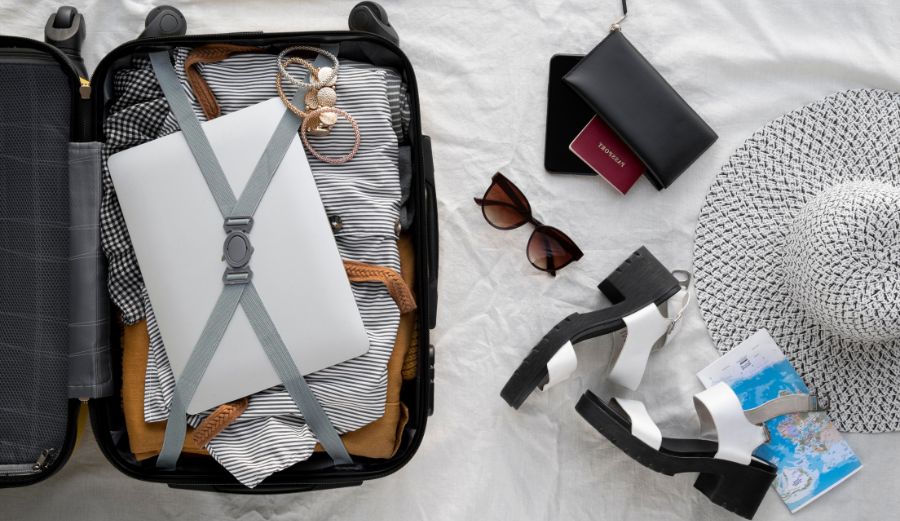
Efficient packing can make all the difference between a cumbersome, disorganized trip and a smooth, enjoyable adventure. Whether preparing for a weekend getaway or an extended journey, mastering packing techniques is essential to maximize space and maintain order in your travel backpack.
Rolling vs. Folding:
- Benefits of Rolling Clothes: Rolling your clothes is a space-saving technique that minimizes wrinkles. It allows you to fit more items in your backpack while keeping them easily accessible. Plus, it’s a favorite among backpackers for its efficiency.
- Packing Cubes: Purchasing packing cubes can be a total game-changer.These zippered fabric containers come in various sizes and shapes and help keep your backpack organized. They’re perfect for separating different types of clothing, toiletries, and accessories. Not only do they save space, but they also make unpacking a breeze.
Hybrid Rolling Plus Folding Approach:
For the ultimate packing efficiency, consider a hybrid approach that combines rolling and folding:
- Roll Heavy and Bulky Items: Roll up items like jeans, sweaters, and jackets to save space and minimize wrinkles. These heavier garments are often less prone to creasing, making rolling a practical choice.
- Fold Delicate and Wrinkle-Prone Items: For dress shirts, blouses, and other wrinkle-prone clothing, folding is the way to go. Place them in packing cubes or flat at the top of your backpack to prevent wrinkles.
Packing Strategies for Different Climates and Durations:
- Hot Weather Packing: When traveling to warm destinations, focus on lightweight, breathable clothing. Opt for moisture-wicking fabrics that help keep you cool and dry. Remember essentials like sunscreen, a wide-brimmed hat, and a swimsuit.
- Cold Weather Packing: For cold climates, prioritize layering. Choose insulating layers like thermal shirts and packable down jackets. Ensure you have warm accessories like gloves, scarves, and a beanie. A compact umbrella can also be handy.
- Versatile Packing for Varying Climates: If your journey spans various climates, pack versatile pieces that can be layered. Choose clothing that works well together and can be mixed and matched to adapt to changing weather conditions.
- Short vs. Long Trips: Short trips allow lighter packing, so stick to the essentials. For longer journeys, focus on durability and versatility. Packing cubes can help you stay organized during extended travel.
- Packing for Special Activities: If you plan specific activities, like hiking or swimming, pack accordingly. Include appropriate footwear and gear, but choose items that serve multiple purposes to save space.
Remember that less is often more when it comes to packing. Avoid overpacking, as it can lead to a heavy, disorganized backpack. Prioritize items based on your itinerary and personal needs, and always leave some space for souvenirs or unexpected finds along the way.
You’ll make the most of the space in your travel backpack by mastering these packing techniques and tailoring your approach to your destination, trip duration, and climate. With a well-organized and efficient pack, you can focus on enjoying your journey without the stress of a cluttered bag.
Organizing Your Backpack with Packing Cubes
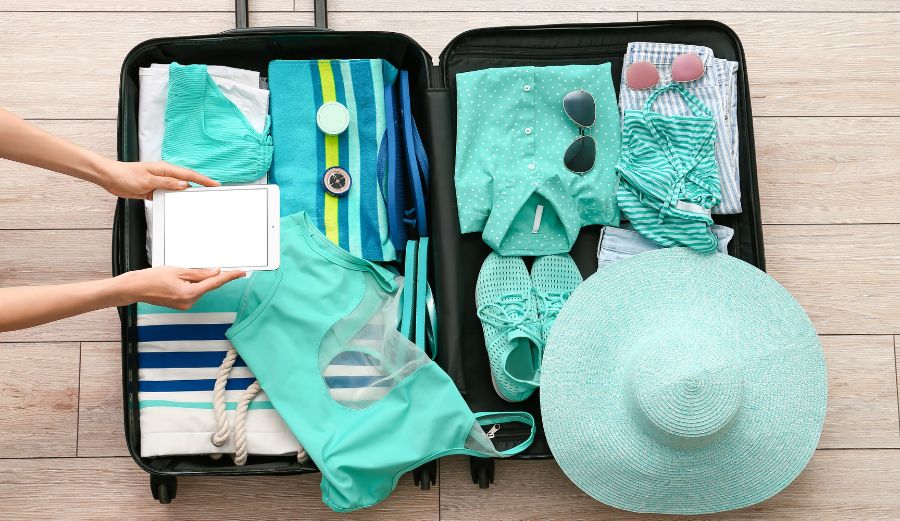
Packing cubes are the unsung heroes of efficient travel packing. These zippered fabric containers have revolutionized how travelers organize their belongings, making packing and unpacking a breeze while optimizing space. Here’s how to make the most of packing cubes for a well-organized travel backpack:
The Power of Packing Cubes:
Packing cubes serve as mini-compartments within your backpack, allowing you to categorize and separate different types of items. Here’s why they’re a game-changer:
- Organization: Packing cubes keep your clothes, accessories, toiletries, and gadgets neatly separated. No more digging through a chaotic jumble of items to find what you need.
- Efficiency: Packing and unpacking become swift and stress-free when everything is in its designated cube. You’ll spend less time rummaging through your backpack and more time exploring your destination.
- Compression: Many packing cubes are designed to compress your clothing, squeezing out excess air to maximize space. This feature is convenient for longer trips or when dealing with bulky items.
Choosing the Right Packing Cubes:
Not all packing cubes are created equal, so consider the following factors when selecting the right ones for your needs:
- Size Matters: Packing cubes come in various sizes, from small pouches for toiletries to large ones for clothing. Choose a mix of sizes to accommodate different items.
- Quality Materials: Look for durable, lightweight, and breathable materials. Nylon or polyester are common choices. Water-resistant cubes can be a plus, especially for toiletries.
- Zippers and Handles: Opt for cubes with sturdy, smooth-zipping closures and reinforced handles. This makes them easier to handle and less likely to break during travel.
- Transparency: Some packing cubes have mesh or see-through panels, allowing you to identify contents without opening them. This is particularly useful for quick access.
Efficient Packing with Packing Cubes:
Now that you have your packing cubes, here’s how to use them efficiently:
- Categorize Items: Assign specific cubes to different categories, like clothing, accessories, toiletries, and electronics. This helps maintain order and simplifies packing and unpacking.
- Roll or Fold Clothing: Roll up clothing items for space-saving efficiency. For wrinkle-prone attire, consider folding. Place rolled or folded clothes inside the corresponding packing cube.
- Group Similar Items: Use smaller cubes for socks, underwear, or electronic accessories. Grouping similar items together makes it easy to locate them when needed.
- Utilize Compression Cubes: Place bulky or puffy clothing items inside if you have compression packing cubes. Compress them to save space and reduce the volume of your pack.
- Stack or Nest Cubes: Organize your packing cubes like building blocks. Stack them vertically to utilize the entire height of your backpack. Alternatively, nest them horizontally for easy access.
- Toiletry Pouch: Use a dedicated packing cube for toiletries to prevent spills and keep them separate from your clothing. Ensure the pouch is waterproof or has a plastic lining for added protection.
- Quick Access Cube: Keep a small packing cube at the top of your backpack with essentials like a travel adapter, charger, and a spare pair of underwear. This cube should be easily accessible during your journey.
Investing in quality packing cubes and following these efficient strategies will transform your travel backpack into a well-organized, stress-free companion. Say goodbye to clutter and wasted time and hello to hassle-free adventures.
Additional Tips for Efficient Packing
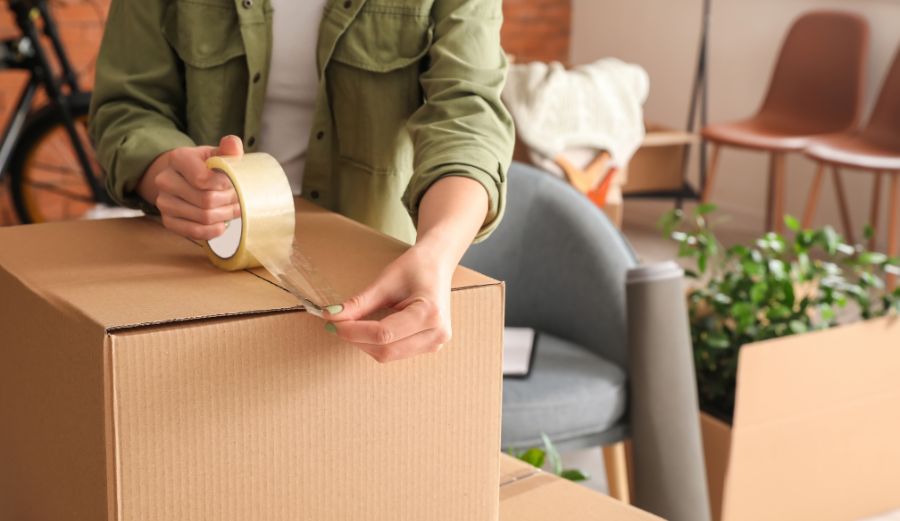
Efficient packing isn’t just about what you put into your backpack; it’s also about planning for the unexpected and ensuring a safe and secure journey. Here are some additional tips to enhance your backpacking experience:
1. Leave Room for Souvenirs: As you embark on your adventures, you will likely encounter unique souvenirs or items you’d like to bring back home. To accommodate these treasures, leave some extra space in your backpack. Consider packing a foldable duffel bag or tote that can expand when needed. This way, you won’t have to sacrifice cherished mementos due to limited space.
2. Embrace Duct Tape: Duct tape is a versatile travel companion. It can mend a ripped backpack strap, patch a hole in your gear, or temporarily fix a broken sandal. Packing a small roll of duct tape can be a lifesaver in unforeseen situations. It takes up minimal space but quickly solves various travel mishaps.
3. Secure Your Backpack with Padlocks: Protecting your belongings is paramount, especially in shared accommodations or crowded places. Invest in sturdy padlocks to secure the zippers of your backpack. Some backpacks have lockable compartments or built-in locking mechanisms. Use these features to deter potential theft and keep your possessions safe.
4. Travel Insurance is Essential: Backpackers should always appreciate the importance of travel insurance. Accidents, illnesses, or unexpected disruptions can occur during your journey. Possessing comprehensive travel insurance offers both peace of mind and financial security.
Look for a policy that covers medical emergencies, trip cancellations, lost or stolen belongings, and other unforeseen circumstances. World Nomads is a popular choice among backpackers for its tailored coverage.
5. Prioritize Essential Documents: Make digital copies of essential travel documents, such as your passport, driver’s license, visa, and travel insurance details. Store these copies securely in a cloud service or email them to yourself. Additionally, carry physical photocopies of these documents separately from the originals. In the event of loss or theft, having duplicates can expedite replacement processes.
6. Pack a Travel First Aid Kit: A compact kit should be part of your backpacking gear. Include adhesive bandages, antiseptic wipes, pain relievers, blister pads, and any required personal medications. You may only sometimes have immediate access to a pharmacy, so being prepared can save you discomfort and inconvenience.
7. Practice Minimalism: While bringing various clothing and gear is tempting, remember that minimalist packing can make your travels more comfortable. Prioritize versatile items that you can easily mix and match. Consider quick-drying clothing that can be easily laundered on the go.
Efficient packing goes beyond fitting your belongings into a backpack; it’s about planning for contingencies, prioritizing security, and ensuring a smooth travel experience. By following these tips and staying organized, you’ll be ready to tackle any adventure with confidence and ease.
Final Recap on How to Pack a Backpack for Travel
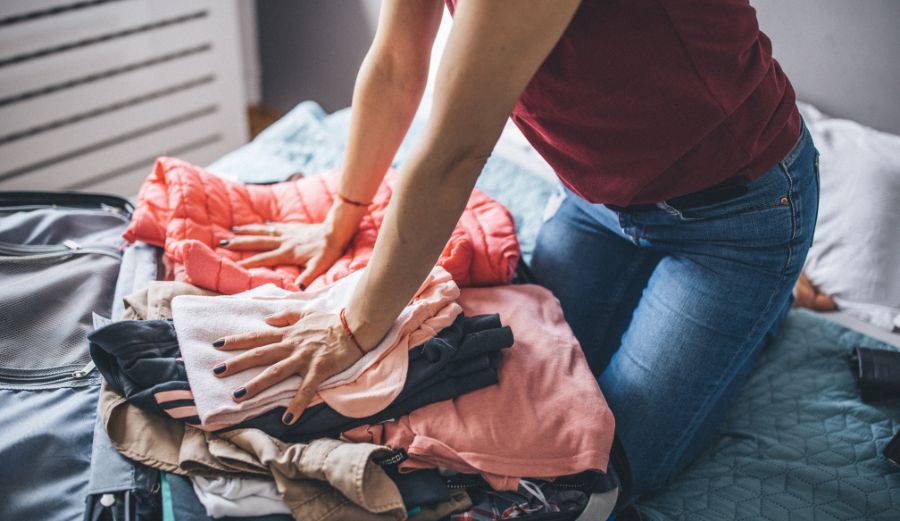
In the world of travel, the way you pack your backpack can genuinely make or break your journey. As we conclude this comprehensive guide on How to Pack a Backpack for Travel, let’s recap the key takeaways that will set you on the path to successful and efficient packing.
Selecting the right travel backpack is the foundation of your packing journey. Opt for a carry-on-sized, well-organized bag designed for travel, not hiking.
Efficient packing for air travel involves carefully selecting essentials, intelligent clothing choices, and mindful weight distribution.
Maximize space with packing techniques like rolling clothes and packing cubes, allowing you to pack more while staying organized.
Packing cubes are your secret weapon for maintaining order within your backpack. Choose the right ones and employ them strategically.
Consider leaving room for souvenirs, using duct tape for quick fixes, securing your backpack with padlocks, and investing in travel insurance for a worry-free adventure.
Remember that minimalism can enhance your packing experience. Pack smart, prioritize essentials, and keep it simple.
Efficient packing isn’t just about fitting your belongings into a backpack; it’s about ensuring a smooth, secure, and enjoyable journey. Now, armed with these tips and techniques, you’re ready to confidently embark on your backpacking adventures.
We invite you to share your packing wisdom and travel experiences in the comments below. Your insights can inspire and guide fellow travelers as they prepare for their explorations. Safe travels, and may your backpack always be a source of convenience, not chaos.
